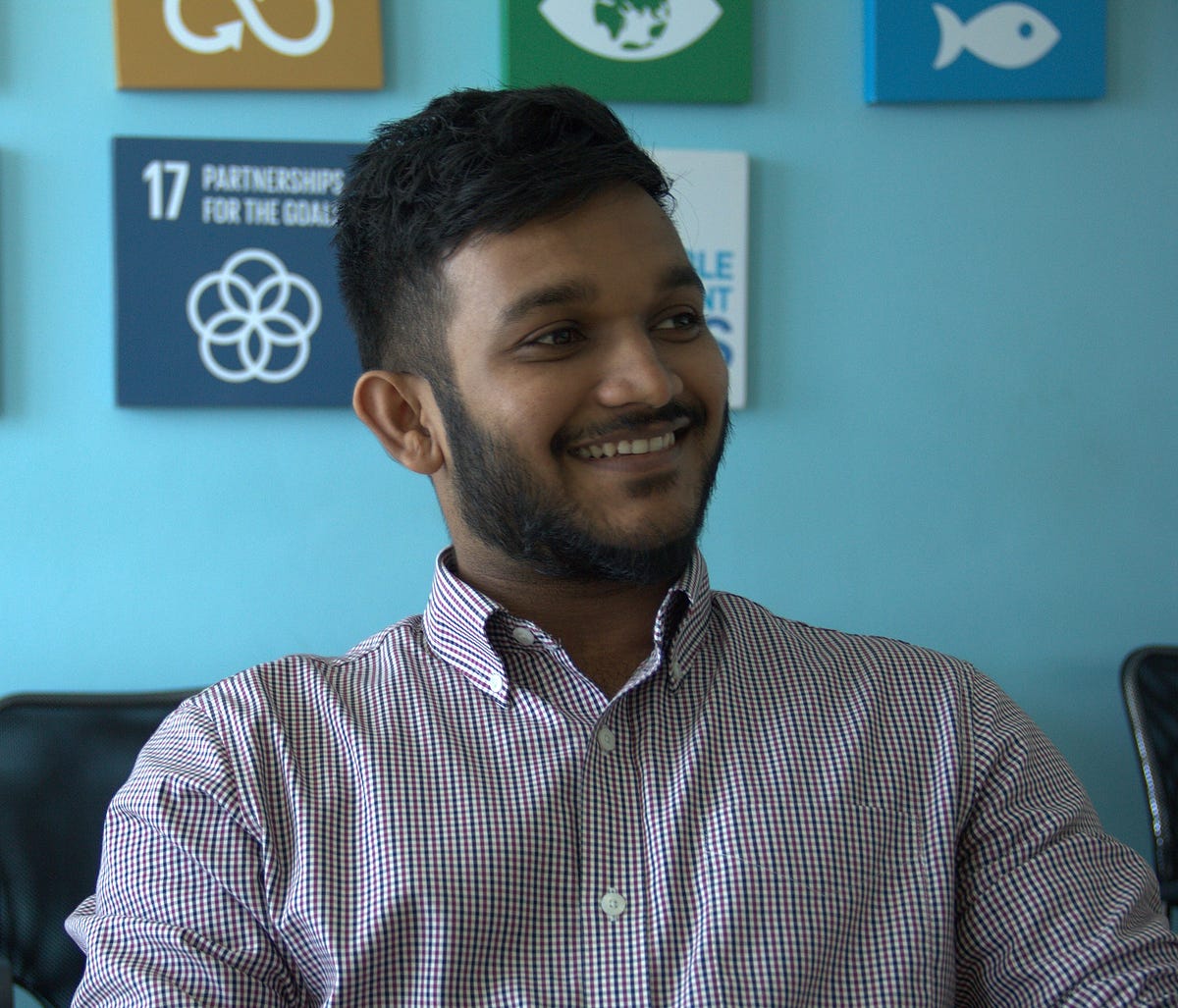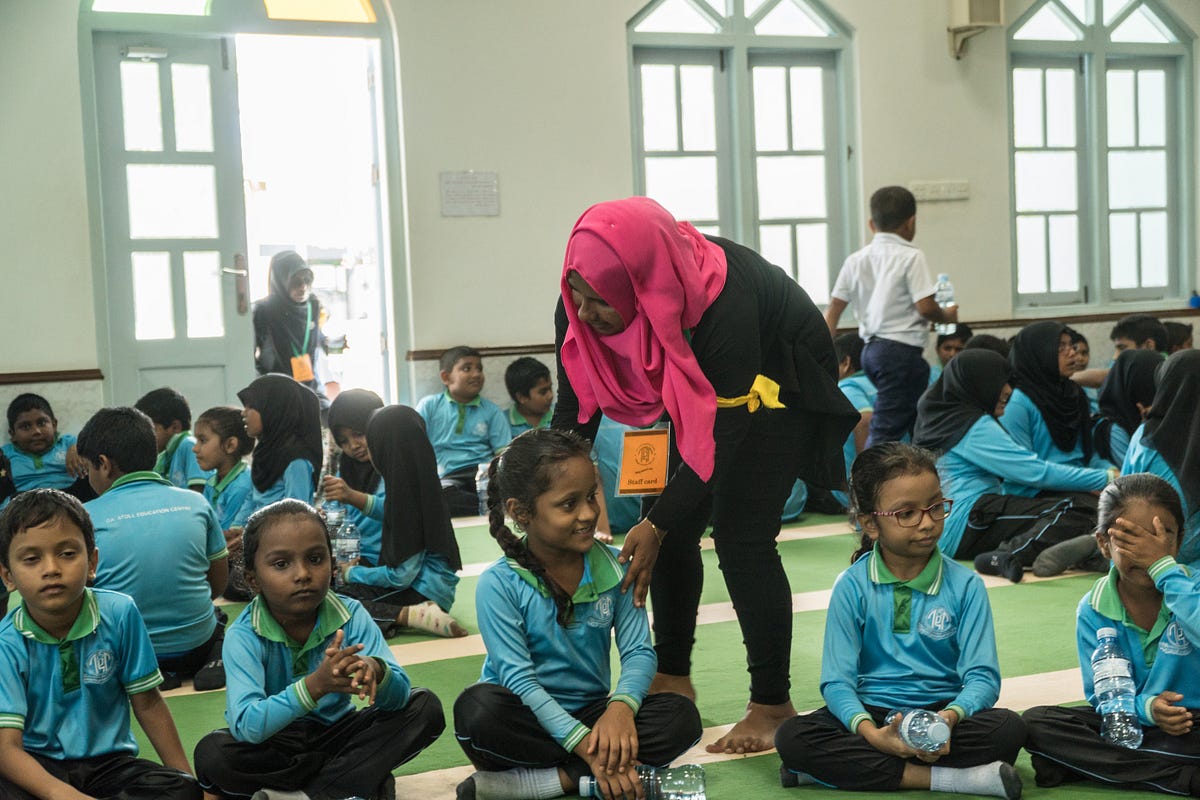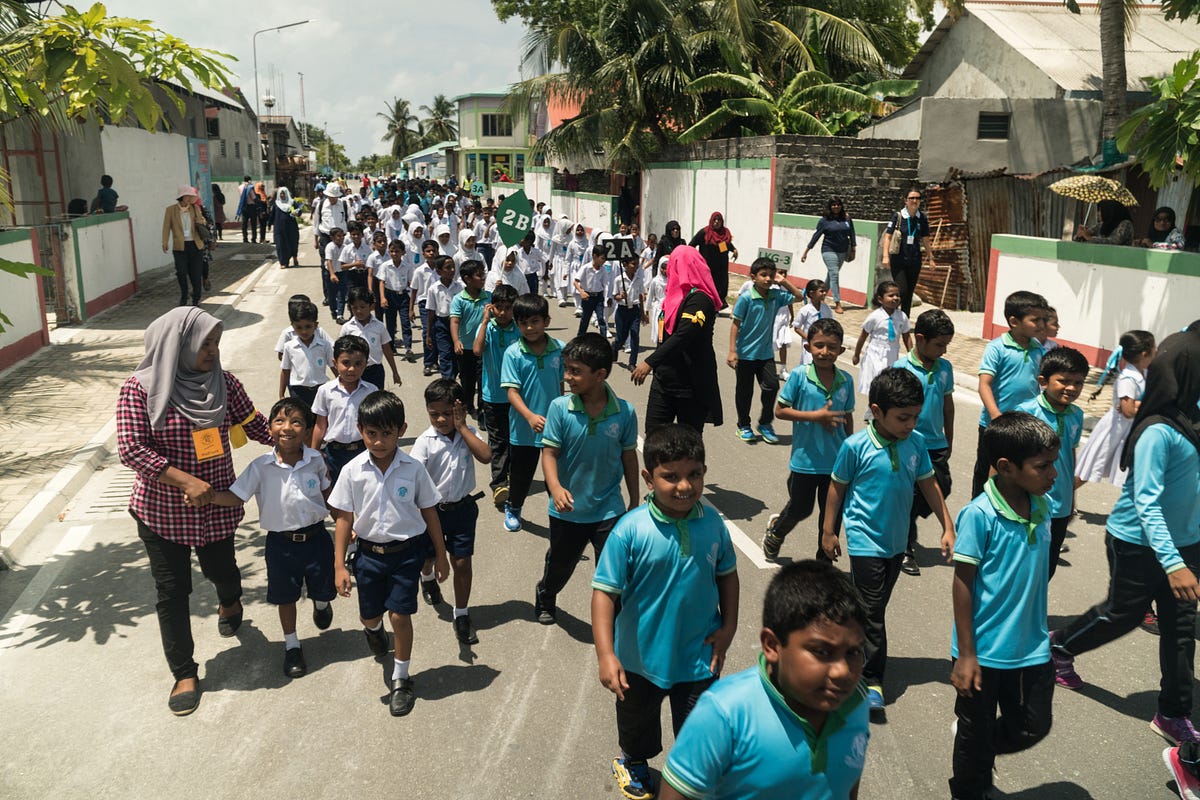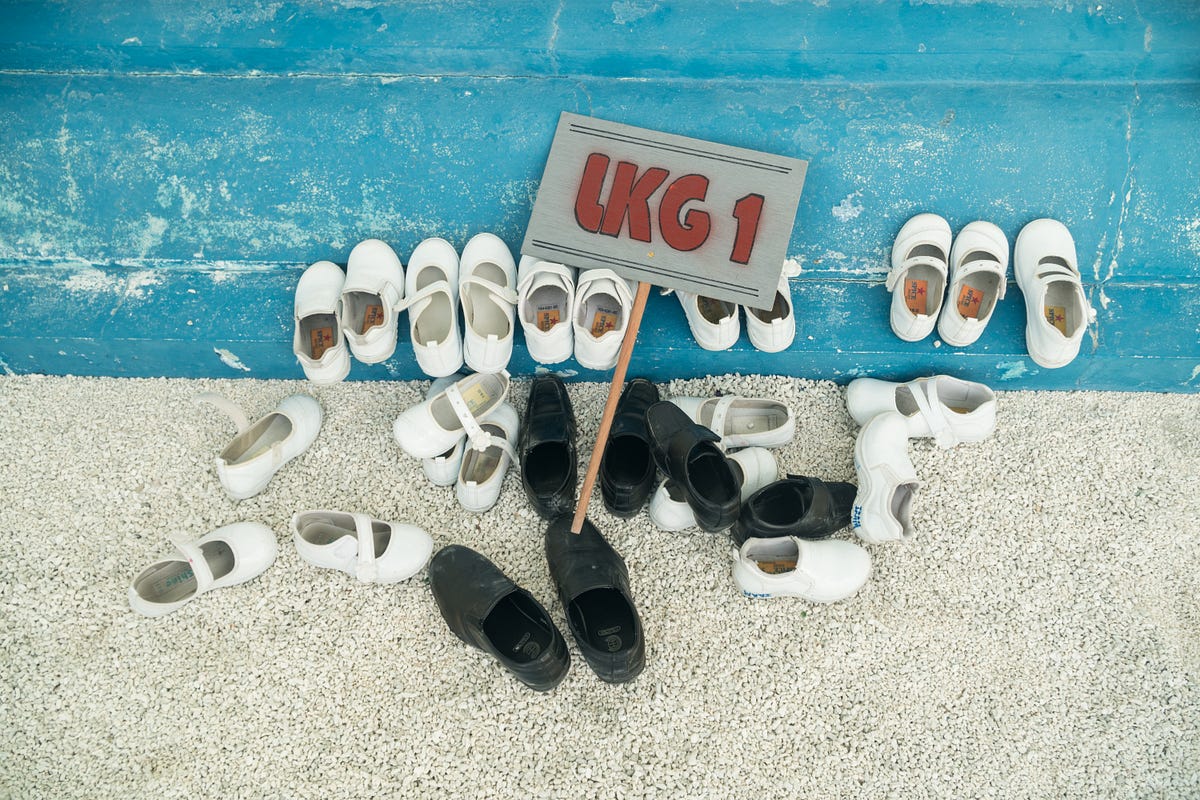A nation of islands barely above sea level, the Maldives is a special case for tsunami preparedness and response.
Move to higher ground, and move further inland. It makes perfect sense to most people as it appeals to our basic instinct to move further away and out of reach of danger. But in the Maldives, where I live, these instructions leave people more confused than confident and can cost lives.

Ahmed Mohamed Shihab works with the Resilience and Climate Change unit at UNDP Maldives. His work is informed by his experience during the 2004 tsunami in his country.
Surrounded by water
I was at home sleeping when the tsunami hit the Maldives in December 2004. After being pulled out of bed, I rushed outside to see that the entire road was blanketed with water. I could see people wading through the water, confused and uncertain. As I stood knee-deep in water, the chaos around me ebbed away, and for a fleeting moment I thought that the island was sinking.
We are a nation of islands in the Indian Ocean, composed of our delicate coral reef ecosystem. Nearly 80 percent of our islands are less than one metre above sea level. Only three out of 186 inhabited islands are larger than three square-kilometres. So, when a tsunami strikes, there is no further inlands to run to as the opposing shoreline is just minutes away. Finding higher ground is also complicated because most of our islands have only a handful of two-storey buildings.
The truth is that we can’t use any textbook solutions for tsunami response. Our islands are flat and are surrounded by a lot of water. This leaves the question, what can we do when the next tsunami hits?

Children as agents of change: When we teach children to recognize and respond to disasters, they in turn educate their families and communities
Shelter in the eye of the storm
The ultimate answer lies in the ocean — a boat evacuation. Further from the shore, at around 100-metre depths, tsunami waves are just a few inches high. Like sleeping giants, they pass underneath without any indication of what is to come. Yet a successful boat evacuation requires planning, coordination, and practice.
But, the ground reality is that most of our islands don’t have enough boats to mount a full evacuation. With the economic disparity between islands and the geographical dispersion, islands that top the tsunami risk charts are generally the most vulnerable, and this compounds the problem further.



With focused sessions, community spectators and students as agents of change, the tsunami drills reached beyond the schools to the wider community.
Though this was not heartening, we rolled up our sleeves and got to work. We wanted to move beyond a simple drill, and achieve a complete education and preparedness programme. To do this, we assembled a national working group. We found dedicated partners in the Ministry of Education, the National Disaster Management Centre, Maldivian Red Crescent, the Fire and Rescue Service of the Maldives National Defence Force, Maldives Police Service, and in the Maldives Meteorological Services.
One school, one island
We at UNDP Maldives believe that children are agents of change. When we teach children to recognize and respond to disasters, they in turn educate their families and communities. With the first school tsunami evacuation drill in the Maldives, we mobilized over 550 students in GA. Villingili. I would like to believe there were at least 550 exciting conversations on tsunami preparedness that day.

Though small, children can have a huge impact on their families and communities.
With focused sessions, community spectators, and our young agents of change, we were able to reach beyond the school to the community. They all know that their best solution is a boat evacuation. But should that not be an option, they are more informed and better prepared to take the next best course of action — elevated buildings in low impact areas.
With the funding from the Government of Japan, we will be replicating such drills in four more islands. The results and lessons learned from GA. Villingili, will lay the foundation upon which all of our future drills will be constructed. The final guidelines that we produce will be adopted by the Ministry of Education and integrated into all School Emergency Operations Plans throughout the country.

Photo: Masrah Naseem/UNDP Maldives
Full details are available from the link below:







